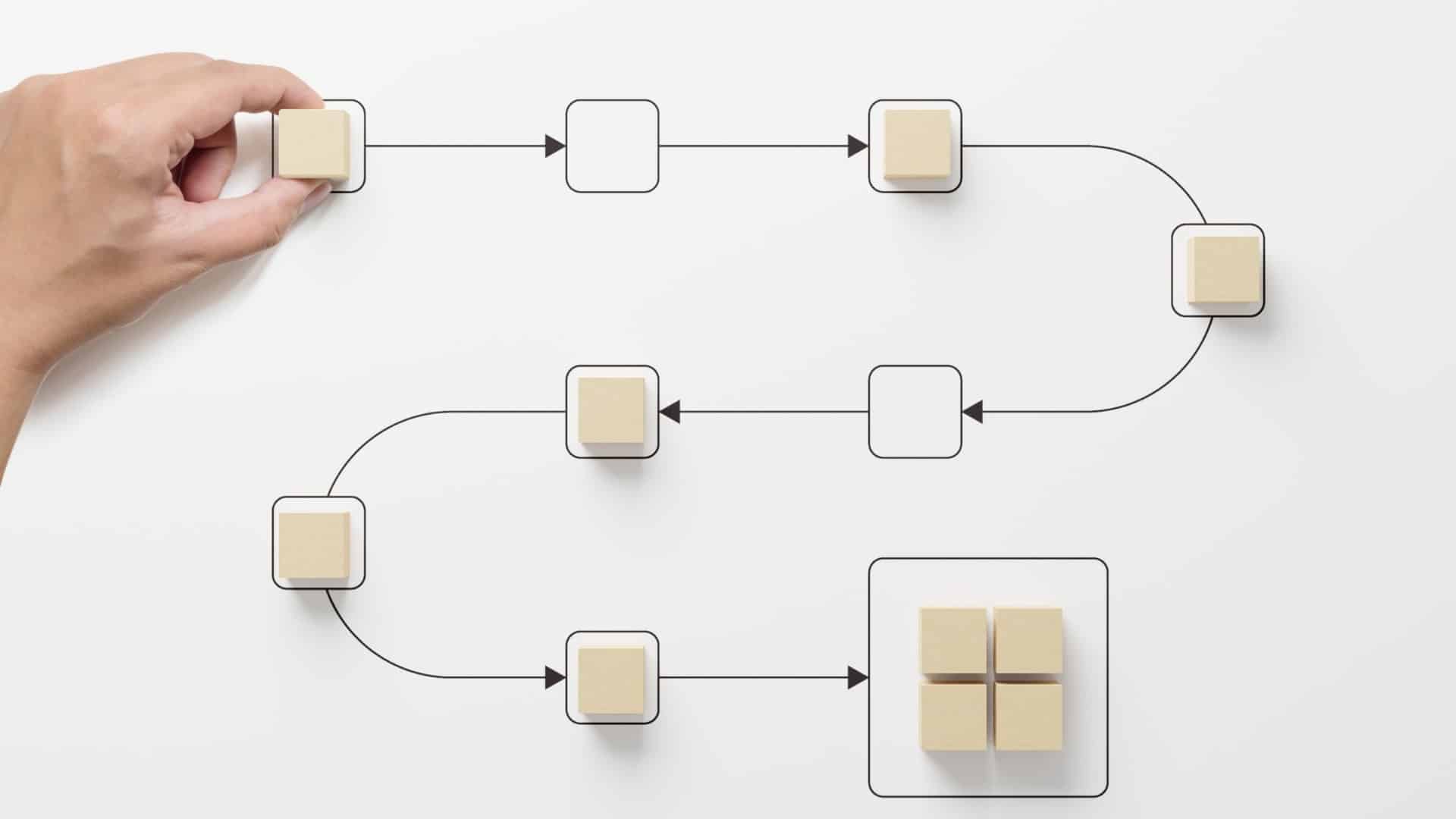How Digital Asset Management Enhances Creative Briefs for Faster, More Effective Content Creation
Why Creative Briefs Matter In Modern Marketing
Every successful marketing campaign, rebrand, or content production project starts with a concise statement and clear, structured creative brief. Generating content ideas is a critical phase in content creation, drawing inspiration from team inputs, customer feedback, and competitive analysis. It serves as a roadmap that aligns creative teams, stakeholders, and decision-makers—ensuring that everyone is working toward the same vision.

However, Many Brands Struggle With:
- Disorganized Creative Briefs – scattered across emails, pdfs, and shared drives
- Inconsistent Brand Messaging – leading to off-brand content across different campaigns
- Slow Content Approvals – delaying projects and missing campaign deadlines
- Repetitive Work – teams wasting time creating assets that already exist
Solution: A Digital Asset Management (DAM) system like ASMBL streamlines creative brief management—ensuring every team works with the right assets, branding, and messaging from the start.
Let’s explore how DAM enhances creative briefs, improving efficiency and collaboration for marketing and creative teams.
What Is A Creative Brief?
A creative brief is a short, structured document that outlines the goals, target audience, messaging, and deliverables of a creative project. A blog post is one of the effective content formats that can be outlined in a creative brief. A well-defined content idea is crucial in this process, as it influences everything from outlining to drafting.
Definition And Purpose Of A Creative Brief
A creative brief is a concise document that outlines the objectives, target audience, and key messaging for a content creation project. Its purpose is to provide a clear direction for the content creation process, ensuring that all stakeholders are aligned and working towards the same goals. A well-crafted brief statement helps to focus the content creation efforts, resulting in more effective and engaging content that resonates with the target audience. Additionally, well-crafted content in a creative brief can help target keywords effectively, benefiting search engines and driving organic traffic.
In the context of content creation, a creative brief serves as a roadmap for creating multiple pieces of content that work together to achieve a specific objective. It helps to identify the most relevant content format, tone, and style that will resonate with the target audience and drive the desired outcome. By providing a clear brief, content creators can develop a content strategy that is tailored to the needs of the target audience, increasing the chances of success in terms of engagement, conversion, and ultimately, driving organic traffic to the website.
Brief History of Creative Briefs
The concept of creative briefs has been a cornerstone of the advertising industry for decades. Originating in the 1960s, advertising agencies began using briefs to outline the objectives, target audience, and key messaging for their campaigns. This structured approach helped ensure that all stakeholders were aligned and working towards the same goals.
Over time, the use of creative briefs expanded beyond advertising to encompass various forms of content creation, including marketing, public relations, and digital media. Today, creative briefs are an essential tool for content creators, helping them clarify their goals, identify their target audience, and develop effective content strategies.
A well-crafted brief can guide content creators in producing multiple pieces of content that work together to achieve a common objective. By outlining the key elements of a content project, a brief ensures that all stakeholders are on the same page and working towards the same objectives. In the digital age, creative briefs have become even more crucial, helping content creators navigate the complexities of online content creation and distribution.
Key Elements Of A Creative Brief: Understanding Your Target Audience
- Project Overview – what is the project about and why is it important?
- Target Audience – who is the content for, and what are their interests or pain points?
- Key Messages – what’s the one thing the audience should remember?
- Tone & Style – what kind of brand personality should be reflected?
- Deliverables – what content formats are needed (social media posts, videos, blog articles, etc.)?
- Timeline & Budget – when is the deadline, and what are the budget constraints?
Pro Tip: Store all creative briefs inside a DAM system like ASMBL to ensure that all teams have access to the latest project guidelines.

Challenges of Traditional Creative Briefs
One of the biggest challenges of traditional creative briefs is their rigidity and inflexibility. In today’s fast-paced digital landscape, content creators need to adapt quickly to changing circumstances and trends. Traditional briefs, however, often require significant time and effort to create and revise, making it difficult to pivot or adjust course as needed.
Another challenge is that traditional briefs can be overly focused on the needs of the content creator rather than the target audience. This can result in content that fails to engage or resonate with the audience, leading to poor performance and low ROI. Additionally, traditional briefs often rely on assumptions and hypotheses rather than data and research, which can further diminish their effectiveness.
Incorporating more data-driven insights and audience research can help content creators develop briefs that are more targeted and effective. Moreover, traditional briefs tend to focus on individual pieces of content rather than the broader content strategy. By taking a more holistic approach to content creation, content creators can develop briefs that drive organic traffic and engagement across multiple channels.
Addressing these challenges can lead to the development of briefs that are more effective, efficient, and aligned with the needs of the target audience. This, in turn, enhances the overall content creation process, ensuring that the content produced is engaging, relevant, and successful in achieving its objectives.
Real-World Examples: How Brands Use Creative Briefs With DAM
1. Marketing Teams: Creating On-Brand Content Faster
Challenge: A marketing team needs to create content and launch multiple campaigns across digital ads, social media, and email marketing while ensuring brand consistency. Generating content ideas is crucial for these campaigns, as it helps align with content goals and audience preferences.
Solution: A DAM system integrates with creative briefs, giving teams quick access to brand-approved templates, messaging guidelines, and assets.
Example: A saas company stores all creative briefs, campaign assets, and content calendars in ASMBL’s DAM, ensuring global teams stay aligned on messaging and visuals.
2. Creative Agencies: Managing Multiple Client Projects Seamlessly
Challenge: Agencies work with multiple clients and need a structured system to store brand guidelines, creative briefs, and campaign assets. By collaborating with the sales team, agencies can gather insights on customer interests and challenges, which helps in creating more targeted content strategies.
Solution: A DAM system organizes each client’s creative briefs and assets in structured folders, making it easy for designers and marketers to retrieve approved content.
Example: A digital marketing agency uses ASMBL’s DAM to store client-specific creative briefs, reducing the time spent searching for project details and speeding up approvals.
3. Video Production Teams: Streamlining The Content Creation Process
Challenge: A video production team needs quick access to project briefs, scripts, and approved footage for multiple projects, emphasizing the importance of creating content in a structured manner. Optimizing video content for search engines can improve visibility and drive organic traffic.
Solution: A DAM system categorizes video scripts, raw footage, and editing guidelines, making collaboration seamless.
Example: A media company uses ASMBL’s DAM to organize video production briefs and reference materials, ensuring editors and creative directors work from a single source of truth.
How A DAM System Improves Creative Brief Management
Without A DAM System, Creative Teams Struggle With:
- Lost Or Outdated Creative Briefs Stored In Multiple Locations
- Slow Content Approvals And Delays In Marketing Execution
- Inconsistent Branding Due To Unstructured Workflows
How ASMBL’s DAM-Powered Creative Brief Management Helps:
Centralized Storage For Creative Briefs – no more searching through emails or shared drives. This ensures that valuable resources are easily accessible for potential customers, helping to engage and acquire leads. ASMBL’s DAM can also help streamline the generation of content ideas for creative projects by providing a centralized platform for team inputs, customer feedback, and competitive analysis.
AI-Powered Search & Tagging – find project briefs and assets instantly
Automated Content Workflows – streamline project approvals and content production
Version Control & Permissions – ensure only the latest brief is used
Seamless Integrations – connect with Adobe, Canva, Google Drive, and project management tools
Lesson: A DAM system keeps creative briefs organized, accessible, and aligned with brand assets—speeding up content creation and approvals.
Best Practices For Managing Creative Briefs With DAM: Aligning With Your Content Strategy
1. Store All Creative Briefs In A Centralized DAM System
- Ensure every creative project has a dedicated, structured folder with all relevant briefs and assets
- Make it easy for designers, copywriters, and marketers to access project guidelines instantly
2. Link Brand Assets To Creative Briefs
- Attach logos, design templates, typography, and brand messaging documents directly to briefs
- Prevent off-brand content by ensuring teams only use brand-approved materials
3. Automate Creative Approvals And Workflows
Implement automated approval processes for creative teams, marketing managers, and executives. Automated workflows can ensure content is optimized for search engines, improving performance and visibility.
Reduce delays by tracking project progress and ensuring sign-offs happen on time.
4. Ensure Version Control To Avoid Outdated Briefs
- Prevent teams from using old versions of briefs by keeping only the latest, approved documents
- Track all edits, revisions, and approvals within the DAM system

Why ASMBL Is The Best DAM For Creative Brief Management
If your creative team struggles with scattered briefs, slow approvals, or inconsistent branding, ASMBL provides the ultimate DAM solution to streamline content development. For comprehensive topics, it may be beneficial to create multiple pieces of content to effectively address the various aspects of the subject matter, ultimately enhancing the content’s reach and engagement.
What Sets ASMBL Apart?
- AI-Powered Search & Tagging – instantly find creative briefs and project assets
- Automated Content Workflows – speed up project approvals and campaign execution
- Version Control & Approvals – ensure teams always use the latest, brand-compliant content
- Secure Access Controls – prevent unauthorized asset use or modifications
- Seamless Integrations – works with Adobe, Canva, Google Drive, and marketing platforms
With ASMBL’s DAM, creative teams can manage briefs, assets, and projects faster—without the chaos.
The Future Of Creative Project Management: Why Brands Must Act Now
Creative teams that rely on scattered project briefs, outdated assets, and inefficient approval processes struggle to keep up with content demands.
A DAM-Powered Creative Brief Management System Ensures Faster Access, Structured Collaboration, And Brand Consistency—Boosting Efficiency Across All Creative Projects.
If Your Team Struggles With Unorganized Briefs, Disconnected Workflows, Or Slow Approvals, It’s Time To Upgrade.
Discover How ASMBL’s DAM Helps Businesses Centralize, Manage, And Streamline Creative Briefs.
Book A Demo Today And Take Control Of Your Creative Project Management Strategy.
As the landscape of content creation evolves, content consumers are increasingly empowered to participate actively in content generation and sharing.
Want to know more about digital asset management?


